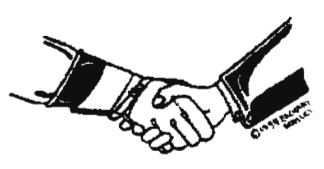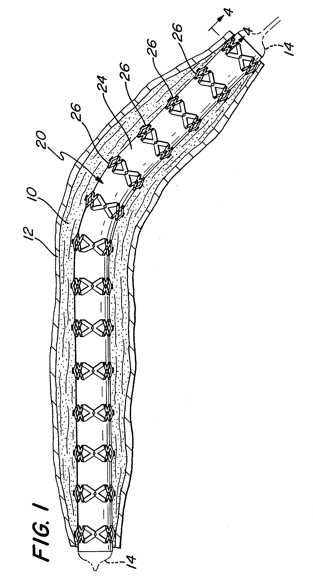 Hold on, we’ve got a complicated one here. Save it for your “very long reading” queue. One trademark, three potential owners in the distribution chain with overlapping periods of time during which they claim ownership.
Hold on, we’ve got a complicated one here. Save it for your “very long reading” queue. One trademark, three potential owners in the distribution chain with overlapping periods of time during which they claim ownership.
The mark:
“Smart Candle” (Smart Candles, SMARTCANDLE, SmartCandles, etc.) for electronic candles.
The companies:
Smartcandle.co.uk Limited (“SCK”) — non-party UK company; no dispute that Smartcandle.co.uk was the original owner of the mark.
Excell Consumer Products Ltd. (“Excell”) — Plaintiff and former distributor for SCK.
Structural Integrity Property Services, LLC (“Structural”) — Defendant, former distributor for Excell, and trademark registrant.
The timeline:
- 2002: SCK and Excell enter into a licensing agreement granting Excell an exclusive 5-year license to manufacture products under SCK’s patent and sell the products under the “SMARTCANDLES” mark.
- 2004 (October): Oral agreement between Excell and Structural that Structural would distribute Smart Candles in the U.S.
- 2004 (December): Letter agreement for the sale of some of the SCK assets to Excell; the scope is in dispute. Excell never paid the amount owed.
- 2005: Structural files a trademark application for SMART CANDLE. The mark registers October 17, 2006. (The petition for cancellation is filed October 12, 2011. Timing is everything.)
- 2006: SCK and Excell negotiate an agreement for satisfaction of the 2004 agreement; Excell produces a document that purports to memorialize the agreement but its genuineness is disputed.
- 2007: SCK is administratively dissolved.
- 2010: Excel sends the final payment and claims the final settlement is memorialized in a “Co-operation Agreement”; the document is questionable.
The decision:
The decision is after a bench trial, and the court starts out by setting the parameters:
The parties in this case do not argue that the marks at issue lack distinctiveness. Furthermore, Structural has registered the marks, which means that they are “presumptively distinctive.” Neither do the parties dispute whether there is a “likelihood of confusion.” Therefore, the primary issue before us at trial with respect to liability under the Lanham Act is which party owns the disputed trademarks.
Excell claimed that it acquired the rights to the trademark in 2002 because the license didn’t give SCK the contractual right to exercise control over the quality or production of the Smart Candle products, nor did SCK exercise control — in other words, SCK abandoned the mark. Not so, said the court; Excell was required to, and did, submit samples to SCK and that was good enough. I’m intrigued by the court’s take on how much quality control is required:
The focus and ultimate purpose of this inquiry is the protection of consumers—the sufficiency of a certain level of quality control is determined by the expectations that the licensee’s use of the mark creates in consumers and the supervision that is reasonably necessary to insure that those expectations are not endangered. [So far, so good. – Ed.]
In this case, the Smartcandle Products covered by the 2002 License were relatively simple pieces of electronics with a modest purpose. They were designed to resemble a candle and produce a flickering light. Consumer expectations of the products’ quality must have been likewise modest—as long as the products approximated the appearance of a candle and flickered, they would likely satisfy consumers.
It might be that you buy these particular candles because they are more attractive, or better built, or have a good battery life, which are the kinds of attributes that one might associate with a particular brand, so the court’s reasoning isn’t sound. Nevertheless, a licensee should not be able to claim its own failure to meet quality control standards invalidates the trademark, so no harm in this little shortcut.
Excell also argued that the 2004 agreement assigned the mark to it. The agreement expressly assigned to Excell two patent applications and the www.smartcandle.co.uk domain name, but Excell claimed that the 4-paragraph agreement implicitly assigned all the intellectual property assets for the candles, including the trademark.
In applying UK law, the court couldn’t easily reconcile either view. The agreement was clear and normally one wouldn’t read the assignment of a domain name to mean the trademark too. But the agreement, if read literally, created an unworkable business arrangement.
We are therefore faced with a choice between an interpretation in which the words of the contract mean what they say, but lead to very confusing results, and an interpretation in which the meaning of the words defy linguistic sense, but reach a sensible business outcome. Under the circumstances of this case, and on the record before us, we believe the correct course is to adhere to the ordinary meaning of the words in the contract, despite the difficulties this interpretation presents….
[T]here is no question that the literal meaning of this contract leads to a confusing result. But it is not an impossible result. A reasonable person possessing the relevant background knowledge could conclude that Excell and SCK simply negotiated an ill-conceived bargain, one that transferred certain specified assets without coherently defining the parties’ subsequent rights and obligations. That conclusion is obviously not preferable to a reasonable interpretation that leads to a sound business outcome, but it is better than assigning a contract meaning to which the language is not susceptible. We therefore conclude that Excell did not acquire the Smartcandle trademark in the 2004 Agreement.
Excell also tried to use an assignment-in-gross theory offensively, i.e., that because it was using the mark “in real continuity with the past” it must be the owner of it. “Assignment in gross” is a challenge that there has been a loss of trademark rights because a trademark was assigned without the goodwill, the test being whether the acquirer is using the mark “in real continuity with the past.” In a situation where only part of a business’s assets are acquired, the party trying to defeat a claim of an assignment-in-gross most also show that the assignor divested itself of the trademark rights and business activity involving the mark. Here, the court didn’t decide whether the theory of assignment-in-gross can be used to claim acquisition of rights, but instead found that Excell failed to show that SCK divested itself of the trademark rights and business activities involving the mark. SCK therefore didn’t own the mark under this theory.
The subsequent agreements in 2006 and 2010 didn’t change anything. The court found the 2006 agreement was not genuine and so there was insufficient evidence of what was actually decided in 2006 to hold that the mark was assigned. The 2010 agreement failed because the parties to the agreement didn’t have the authority to assign the trademark.
But SCK went out of business in 2007. The court found that this was the point in time where SCK abandoned the mark and Excell’s use of the mark from 2007 forward established its ownership of the mark.
At the risk of making a long post even longer, I’m curious about tacking in this scenario. Could Excell have argued that it succeeded to the rights that SCK abandoned and therefore that it’s priority date was 2000 or so, defeating Structural’s 2005 filing date for its application?
But Excell was fine without going back that far, as we finally reach Structural’s claim that it was the owner of the mark. It made the claim based on a theory that it was presumptive owner because it had a registration and that Excel had no valid claim of ownership pre-dating the registration. The court acknowledged that Structural had a significant role in developing the brand, but the court applied the well-defined law for manufacturer-distributor relationships and held that Structural was only ever a non-exclusive licensee who, as such, could never own the trademark:
This outcome is entirely consistent with the fundamental purpose of trademarks, to “signify that all goods bearing the trademark come from or are controlled by a single, albeit anonymous, source,” and to “signify that all good bearing the trademark are of an equal level of quality.” Given our finding that Excell had the right under the Distribution Agreement to sell not only through Structural, but also directly to retailers independently of Structural, then it is Excell, not Structural, that is ultimately the single source of all Smartcandle Products in the U.S. Moreover, Structural did not have any means of controlling or maintaining the quality of the goods that Excell sold independently to other retailers. Excell is the only company that could ensure an equal level of quality under these circumstances, because Excell is the source of all Smartcandle Products sold in the U.S.
Excell is therefore the owner of the “Smart Candle” trademark. The court entered an injunction against Structural but did not award money damages because Structural did not engage in willful deception (I quibble here because it seems like a free ride; since Structural was a former licensee it should have to pay on whatever terms it had paid while a licensee), and Structural’s trademark registration was cancelled because Structural was not the owner of the mark.
And believe it or not, I grossly simplified the case.
Excell Consumer Prods. Ltd. v. Smart Candle LLC, No. 11 C 7220(MEA) (S.D.N.Y. Sept. 10, 2013).

The text of this work is licensed under a Creative Commons Attribution-No Derivative Works 3.0 United States License.




